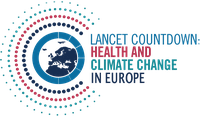All official European Union website addresses are in the europa.eu domain.
See all EU institutions and bodiesDescription

Vibrio bacteria are found in low-salinity, relatively warm waters. It can cause a range of health problems for bathers, including gastroenteritis, wound infections, and blood poisoning (septicaemia). Rising sea surface temperatures have led to a higher percentage of Europe's coastline becoming suitable for pathogenic Vibrio spp., increasing disease transmission risk.
This indicator assesses how changing climate conditions affect the environmental suitability for the transmission of infectious Vibrio disease.
Caveats
Firstly, the infection rate applied here is based on the published data for the USA. A more accurate infection rate adjusted to the epidemiological situation in Europe would be instrumental to obtain a more precise picture of the impact of Vibrio illness across Europe. Secondly, the population datasets are incomplete for some countries. Thirdly, the current models of sea surface salinity (SSS) may be inaccurate in coastal regions, not fully capturing the SSS variability under heavy rainfall, river runoff and/or ice melting.
Reference information
Websites:
Source:
Publication:
van Daalen, K. R., et al., 2024, The 2024 Europe report of the Lancet Countdown on health and climate change: unprecedented warming demands unprecedented action, The Lancet Public Health. https://doi.org/10.1016/S2468-2667(24)00055-0
Data sources:
- Sea surface temperature: Copernicus Marine Service, Global Ocean OSTIA Sea Surface Temperature and Sea Ice Reprocessed dataset
- Sea surface salinity data: Copernicus Marine Service, Mercator Ocean Reanalysis
- Coastline length: The World Factbook data
Additional reading:
Contributor:
Lancet Countdown in EuropeEuropean Centre for Disease Prevention and Control
Published in Climate-ADAPT: Feb 17, 2021
Language preference detected
Do you want to see the page translated into ?

